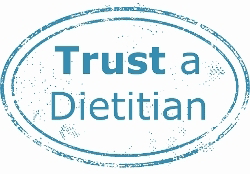Bariatric surgery is carried out for primarily for health reasons. If you believe you will benefit from bariatric surgery you will need to meet national guidelines for an operation, which have been drawn up by NICE (National Institute for Clinical Excellence) these are:- A body mass index (BMI) 35kg/m2 with a weight-related medical condition such […]
The bad week for the sports nutrition sector continued this morning as the UK medicines regulator announced it had warned retailers and manufacturers to remove 84 products containing “dangerous ingredients”. www.nutraingredients.com
We are writing to you directly to provide a briefing on human metabolism and exercise based research from the University of Nottingham which has led to a major breakthrough in sport nutrition science. A clinical study published in the Journal of Physiology last year representing the culmination of a decade’s research revealed dramatic metabolic […]
Recently joined a relatively new company to the UK myGenomics as a Dietetic adviser enabling the use of my recent Nutrigenomics studies. What is this science? The genome is the set of instructions telling your body how to function. It is written in your DNA as a code containing just 4 nucleotides G, A, T […]
I have completed the low FODMAP course with Kings College London and have the skills and competency to provide this dietary treatment. What is the low FODMAP diet? Fermentable, Oligo-, Di-, Mono-saccharides and PolyolS (FODMAPs) are short chain carbohydrates (e.g. fructans, galacto-oligosaccharides, polyols, fructose and lactose) that are poorly absorbed in the small intestine. Ingestion […]
I now practice at Chelmsford Medical Centre(CMC) in New London Road, Chelmsford (www.chelmsfordmedical.co.uk) This is an exciting new development for my company. I am now able to see patients in a modern clinical setting. I will also be planing to work with other healthcare professionals to provide Dietetic & Nutritional treatment where nutrition is linked […]
I placed myself on a low FODMAP diet for a week as part of my course work and its an interesting experience. I suffered with IBS when at Uni and stress was a major factor. I have been mostly asymptomatic since then, but occasionally get bloating and flatus and the urgency feeling. I know dried […]
Upto 40% of primary school children’s lunchboxes do not contain any fruit or vegetables, according to the School Food Trust. BBC health highlighted on the 2nd of Oct 2011. Should we be concerned or do anything?
Everyone’s done it. You’ve been working out, eating well, fitting better into clothes and feel like you are on top of the world – that is, until you step on the scale, and a number pops up that seems impossible. Do scales lie? They must, right?





